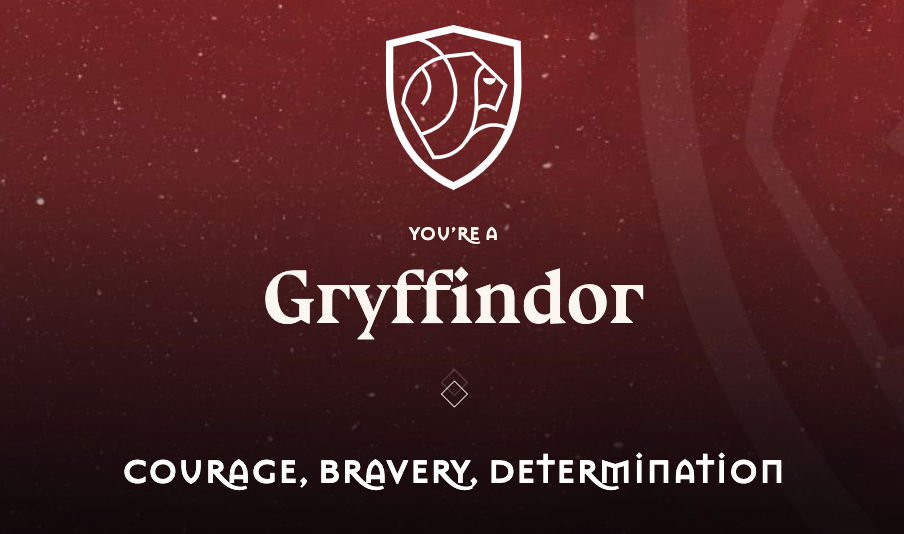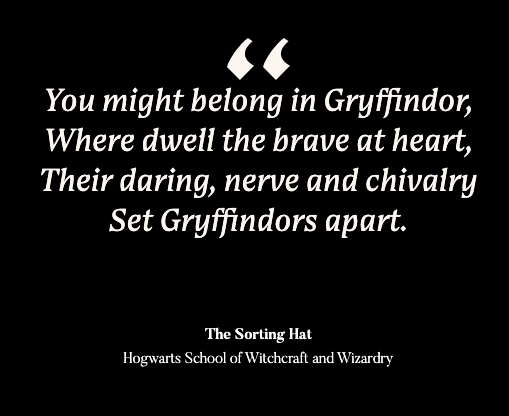The Sorting Hat: What We Can Learn From Harry Potter - Part I
This semester, the final class of my Popular Culture course looked at Harry Potter - in the past, the last class has been dedicated to the place of sport in popular culture and an examination of Twilight and True Blood as metaphors for immigration, integration and multiculturalism.
With the continued success of the Harry Potter series - in February 2018, it was announced that more than 500 million copies of the novels had been sold, in 80 languages (in addition to 8 feature films, endless merchandising, video games, and a theme park) - it is not surprising that the franchise has been the subject of much academic study. Among other things, it has been analyzed from the perspective of gender, class, and race, focusing on themes of injustice, prejudice, wealth, and slavery. Lessons related to the use and misuse of power, community and friendship, heroism, and hope have also been pulled from the 4224 pages (and 1,100,086 words) that make up the seven main books of the series. It’s therefore possible to read the Harry Potter series allegorically - by pulling deeper philosophical and spiritual themes from the series - as well as analogically - by viewing the series as providing commentary on real-world issues beyond its pages.
The two studies that we looked at in my class this year - it will change every year because there’s so much out there to consider - examined the meaning behind Pottermore’s sorting quiz and the ‘houses’ found in Harry Potter and the place of celebrity culture inside and outside of the series.
The sorting hat
Harry Potter merchandise available for sale, proudly declaring allegiance to one of the ‘houses’ in the series
Simply put, popular culture has the potential to influence how we see ourselves, how we see others and how we see the world. Among other things, it has been found to impact the perceptions of juries when it comes to the presentation of evidence at trial, and it can influence our expectations in relationships. It can also affect what groups we associate with and how we see ourselves as a result of our place in those groups.
In the Harry Potter series, when incoming students arrive at the Hogwarts School of Witchcraft and Wizardry - or Hogwarts for short - they are sorted in ‘houses’ (or smaller school communities). Each house is associated with particular personality traits and ‘celebrities’ or notable alumni - Albus Dumbledore, beloved headmaster of Hogwarts was placed in Gryffindor when he was a student at Hogwarts, and Lord Voldemort (also known as Tom Riddle), the series’ villain, was placed in Slytherin.
According to J.K. Rowling, Gryffindors are brave and daring; Hufflepuffs are just, hard-working, and loyal; Ravenclaws value wit and learning; and Slytherins will use ‘any means necessary to achieve their goals’.
pottermore
From mywizardingworld.com, Pottermore’s sorting ceremony
On Pottermore (now WizardingWorld.com) fans can, among other things, take part in their very own sorting ceremony by answering a series of questions. In order to complete the quiz, users have to create an account on the website. On Pottermore, the sorting quiz affected the social networking opportunities of fans, who were permitted to interact with other fans in their own house.
The first article that I asked my students to read for this week compared the outcome of the sorting quiz (and the characteristics associated with each house) with the personality traits identified in real-world assessments like the Big Five personality quiz.
In order to develop a nuanced understanding of the experiment conducted in the study, students were asked to follow along and (1) complete the Sorting Hat quiz on the Wizarding World website, (2) complete a version of the Big Five Personality Trait quiz referred to in the article, and (3) compare their results to the findings and discussion section of the article.
The authors of the article (Laura Crysel, Corey Cook, Tatiana Schember, and Gregory Webster) hypothesized that what we read can influence how we see ourselves. In particular, that they thought that:
People sorted into the House of Gryffindor would score higher than others on personality traits like extraversion and openness to experience;
People sorted into Hufflepuff would score higher than others on personality traits related to social inclusion, like agreeableness, conscientiousness, and the need to belong;
People sorted into Ravenclaw would score higher in need for cognition and careful thinking; and,
Slytherins would score higher in Machiavellianism, narcissism, and psychopathy.
My sorting ceremony
Click on the images below to see my progression through parts of the quiz - I haven’t taken any photos of the quiz questions as they are the property of the Wizarding World.
As an aside, I also did the “Discover Your Patronus” activity. A Patronus is the outcome of a defensive spell, a spirit guardian which acts as a shield to protect its spellcaster. According to the Harry Potter fandom wiki, there are two kinds of Patronuses: the corporeal Patronus and the incorporeal Patronus. The specific animal forms that a corporeal Patronus takes will vary from person to person and reflects each individual's innermost personality. My Patronus results are below and they’re creepy!
the big 5 personality quiz
The next step in this experiment was to complete the Big Five Personality Trait test. The version that I used is available on Truity.com here. The Big Five test measures the five personality factors that psychologists have determined are core to our personality makeup. As described by Truity.com, the five factors are:
Openness - How open a person is to new ideas and experiences;
Conscientiousness - How goal-directed, persistent, and organized a person is;
Extraversion - How much a person is energized by the outside world;
Agreeableness - How much a person puts others' interests and needs ahead of their own;
Neuroticism - How sensitive a person is to stress and negative emotional triggers.
The test and basic results are available from Truity.com for free, and users can pay for an upgraded version to view a full report. I’ve included my results below:
According to Truity, people who rank high in conscientiousness are organized and determined, and good at exercising self-discipline and control to pursue their goals. People who work doggedly towards their goals are often higher in conscientiousness. People who rank high in agreeableness tend to put others’ need ahead of their own, and prefer to cooperate rather than compete. They are also empathetic and like taking care of others.
Yes, this all sounds like me… but what about openness? I was sorted into Gryffindor and, according to the authors of the article that I assigned, should score high in that category. According to Truity.com, people who score lower in openness tend to be practical, conventional and focussed on the concrete. This sounds more like me, but it seems contradictory to the hypothesis put forward by Crysel et al…
So… what does it all mean?
Despite my results, in their study Crysel et al. found that generally their hypotheses were true. In particular, those participants who wanted to be sorted in a specific house rated higher in the personality traits associated with each of them. For example, those who wanted to be sorted into Gryffindor ranked higher on the Personality Test in extraversion and openness than participants in other houses, and those who wanted to be sorted into Hufflepuff were more agreeable than participants in other houses.
The authors concluded that people can and do learn from the fictional stories that they consume and that these stories can affect change in a person’s behaviour and identity. This means that even if a participant is sorted into a house because their responses reflect the person that they want to be, over time they can learn how to become that person - and popular culture (in this case Harry Potter) can teach them how.









